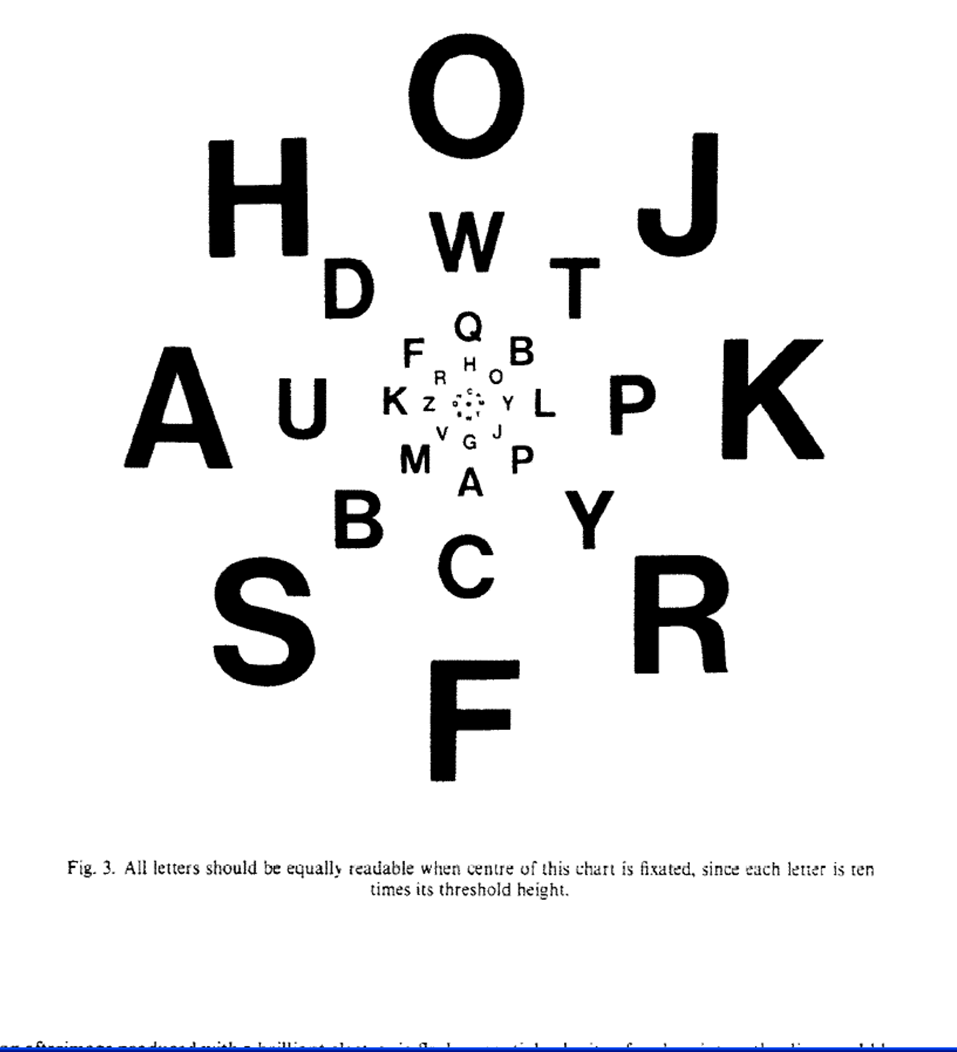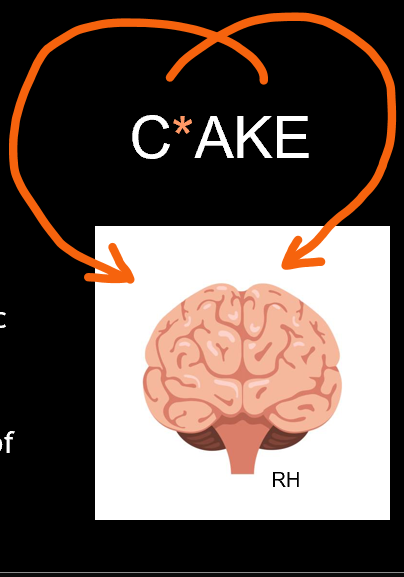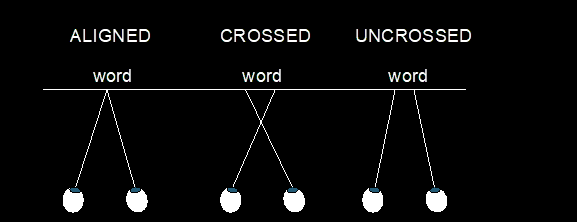Perceptual Constraints on Word Recognition
1/47
There's no tags or description
Looks like no tags are added yet.
Name | Mastery | Learn | Test | Matching | Spaced |
|---|
No study sessions yet.
48 Terms
What is psychological research like?
Western
Educated
Industrialised
Rich
Democratic
What is language research overly focused on?
English, without taking account of diversity, need to consider effects across language and culture
What does light pass through?
cornea and is focused by the lens as an inverted image on retina
What is the retina composed of?
photoreceptor cells (rods and cones)
Where is the greatest density of cones in the fovea?
macula - 5-10 degrees
fovea - 1-3 degrees
Where is vision the sharpest?
within the fovea
What is retinal acuity like?
declines with increasing distance from the centre of the fovea
What did Antis (1974) find?
letters at locations further from point of fixation needs to be larger if you want to recognise them easily

What does this figure show?
amount of magnification required
What are the consequences for reading?
readers perceive only a small amount of high quality info on each fixation, so read by making series of fixations
readers tend to fixate a preferred viewing location bt the beginning and middle letters (Rayner, 1979)
What did O’regan (1981) argue? (2)
that readers maximise info acquired from words
fixating word centre maximises number of letters seen in high acuity
What do studies in English and French show?
words are recognised most efficiently (fewest errors, fastest responses) when fixated at left of centre 0 described as optimal viewing position
Why is the OVP to the left of word centre?
might reflect informativeness of word parts
When do beginning letters of english and french words tend to be most informative?
tend to be most informative abt word identity, so readers might fixate this region to optimise word recognition (O’Regan, 1981)
What do Arabic and Hebrew have?
a non-concatenative morphology in which the most informative letters are spread throughout the word
What did Jordan et al (2011) do?
examine OVP effects for arabic
When are arabic words recognised most efficiently?
when fixated at their centre
Who found similar findings to Jordan et al (2011)?
similar findings in arabic (Farid & Grainger, 1996) and Hebrew (Deutsch & Rayner, 1999)
How do OVP effects differ?
for european vs semitic languages
What did Jordan et al (2011?) show?
evidence for interaction bt acuity limitations and language-specific constraints
What is the perceptual span?
how much info is acquired on each fixation
What do studies use to examine the perceptual span?
use gaze-contingent moving window paradigm, where text is changed in real time, depending on where the reader is looking
What happens in GC moving window paradigms?
typically a chunk of text is shown normally around fixation while text outside this area is replaced by Xs
systematically varying the size of this area can reveal how much info is acquired on each fixation
When do young adults read (English) normally?
when about 4-5 letters to left of fixation and 14-15 letters to right of fixation are visible
What is perceptual span (in reading) like?
assymetric, elongated to the right (in English)
smaller and more symmetrical for beginning readers, readers with dyslexia, and older readers
What do info acquired on each fixation reflect?
reading expertise
What is reading span like for arabic and hebrew?
span skewed to left
What is the reading span like for Japanese and mongolian?
skewed vertically
What is the reading span like for visually dense (Chinese) and morphologically complex (Hebrew) scripts?
smaller span
What is asymmetry perceptual span the product of?
language knowledge and experience
How is the visual field divided?
into left and right hemifields in each eye which project contralaterally to each cerebral hemisphere (LVF to RH, RVF to LH)
recombined by interhemispheric transfer via corpus callosum
Where is word recognition better?
in LH than RH for right handers and so superior when words seen in RVF
What does the split fovea theory claim?
hemispheric division upto the point of fixation
How are fixated words split acc to the SF theory?
in 2 - 1 half projects to RH and other half projects to LH
parts recombine via intra-hemispheric connections (corpus callosum)
What does the SF theory argue?
readers minimise no. letters projecting to RH by fixating left of words centre which may explain the OVP effect

What is an alt view to the split fovea theory?
bilateral processing where an area of overlap at centre of fovea projects simultaneously to both cerebral hemisphere, no foveal splitting of words
What did Jordan and Paterson (2009) find?
words close to fixation in LVF and RVF should be recognised equally efficiently
What do fixated words do (acc to bilateral processing)?
project as whole to both hemispheres simultaneously for recognition
What did Lavidor et al (2001) argue?
split fovea processing predicts larger effects when more word info to left than right of fixation
What did Jordan et al. do?
used eye tracker to ensure accurate fixation and failed to replicate Lavidor et al's work
What was long believed about binocular coordination?
2 eyes fixate same location in words as ppl dont report diplopia (double vision) but during reading, the 2 eyes fixate about 1-2 characters apart although range of disparity can be larger
What can fixations be?
fixations are aligned, cross or uncrossed

What do young readers have?
larger disparities than skilled adults (Blythe et al., 2006)
What did Kirkby et al (2011) find more disparity in reading for?
dyslexic readers compared to typically developing readers
What do older readers show?
same disparities as young readers (Paterson et al., 2013)
What are word recognition and reading constrained by?
acuity and properties of the writing systen
What do retinal projections to the brain do?
influence how easily we can identify words at different locations, with controversy over split foveal processing
What is not always coordinated?
2 eyes, with dfrs in disparity depending on reading skill and specific reading difficulties